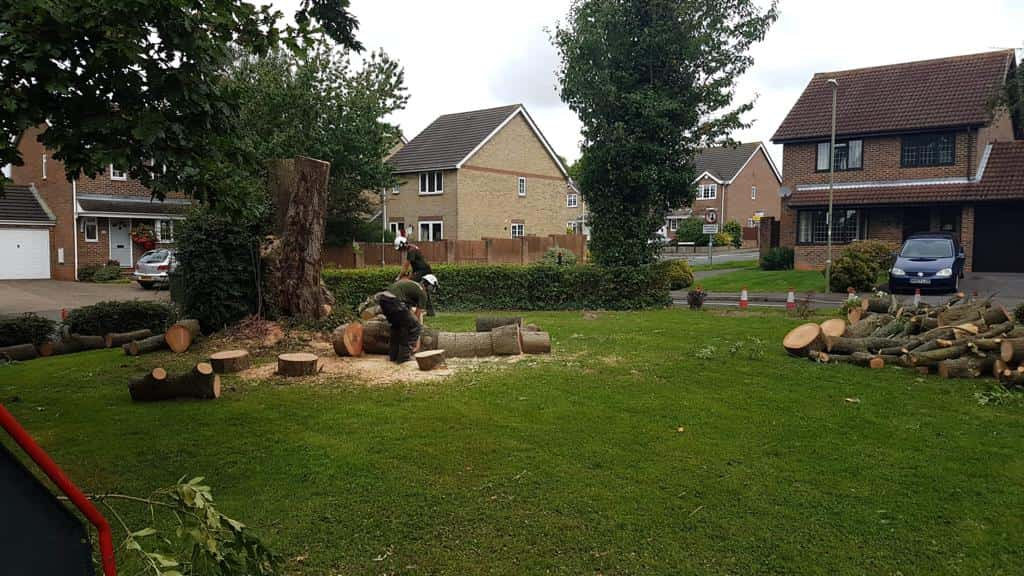Trees add natural beauty, shade, and character to any landscape—but they can also pose serious risks when damaged, diseased, or unstable. Knowing the warning signs of a dangerous tree is essential for maintaining safety on your property. At EM Tree Surgery Emersons Green, we regularly assist homeowners in Emersons Green, Bristol with identifying hazardous trees and providing safe, expert removal when necessary.
Below, we highlight the most common indicators that a tree may need to be taken down.
Large Cracks or Splits in the Trunk
One of the most telling signs of structural instability is the presence of deep cracks, splits, or seams in the main trunk. These can indicate internal damage or weakness that compromises the tree’s ability to support itself, especially during high winds or heavy rain.
Look out for:
- Vertical cracks along the bark
- Cavities forming at the base or in the trunk
- Signs of decay within the split areas
These may suggest that the tree is structurally unsound and could fail without warning.
Extensive Dead or Falling Branches
While occasional dead branches are normal, a tree shedding large limbs or featuring significant areas of dieback can be a red flag. These weak limbs are prone to snapping and may fall without notice, especially in adverse weather.
Warning signs include:
- Multiple dead branches concentrated in one area
- Branches dropping during calm weather
- Hollow or brittle limbs that break easily
Removing the tree may be the safest option if the dieback is widespread or affects key structural limbs.
Leaning Heavily or Suddenly
A tree that naturally leans may still be healthy, but if a tree begins to tilt further over time or suddenly leans after a storm, it could indicate root failure or instability in the soil.
Causes of concern include:
- Sudden change in the angle of the trunk
- Raised soil or exposed roots on one side
- Cracks forming in the ground near the base
These are strong indicators that the tree may be losing anchorage and is at risk of toppling.
Signs of Root Damage or Decay
Root systems are the foundation of a tree’s stability. When they are compromised, the entire tree becomes vulnerable to collapse—even if the canopy looks healthy. Unfortunately, root problems often go unnoticed until it’s too late.
Visible signs include:
- Fungal growth (such as mushrooms) at the base
- Soil heaving or movement
- Dead patches in the surrounding grass
- Trees with exposed or broken roots
Root decay is one of the most common causes of unexpected tree falls.
Evidence of Disease or Pests
Many serious tree diseases and infestations lead to internal decay, reduced stability, or structural weakening. While some conditions are treatable, others may render the tree too dangerous to save.
Look for:
- Unusual leaf discolouration or premature leaf drop
- Oozing sap or foul odours from the bark
- Holes in the trunk or sawdust-like material at the base
- Excessive bark loss or peeling
In these cases, prompt professional assessment is essential.
Conclusion
A hazardous tree is not something to ignore. It can pose a danger to people, pets, property, and even neighbouring buildings. Recognising the signs early and taking action can help prevent serious damage or injury.
If you’re unsure about the safety of a tree on your property in Emersons Green, Bristol, the team at EM Tree Surgery Emersons Green is here to help. We provide expert inspections, honest advice, and safe tree removal where necessary. Contact us today to arrange a consultation and safeguard your outdoor space.
Call us on: 0117 463 1711
Click here to find out more about EM Tree Surgery Emersons Green
Click here to complete our contact form and see how we can help with your tree’s needs.

